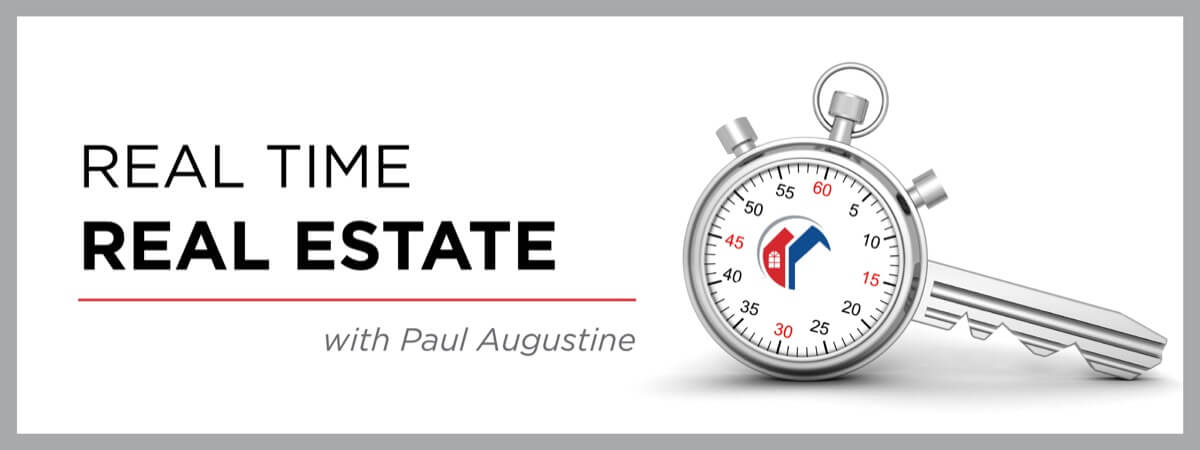
Selling Your Home in 2020: Same Demand, New Approach
As we discussed last week, buying a home in 2020 is going to be a very different process than in any previous year. The same is true for selling.
The good news is, 2020 is still going to be a great year to sell your home. It’s just going to require a much different approach than you may have used before the COVID-19 crisis — one centered around health and safety for your family, your potential buyers, and everyone else involved in your transaction.
Three tactics in particular are becoming key to the new real estate selling process: virtual tours, virtual showings, and a prescribed in-person showing and offer review process.
Virtual Tours
Virtual tours aren’t new to the marketplace. In fact, they’ve been in used for upwards of ten years. But while they once were considered a novelty, I believe they’re going to become as essential as high-quality photography.
Keep in mind that virtual tours are different from virtual showings (we’ll cover those next). Virtual tours are short videos of a property, often providing a walkthrough. They typically start at the curb, move to the front door and into the home, then through the home and end out back. Depending on the size of your home, this may be a two- to four-minute video.
The standard for real estate photography today includes all of your major mechanical components: electric panel, heating and A/C systems, water heater, laundry room, walk-in closets, and pool pump equipment. In addition to photos, a virtual tour would provide a more in-depth first “live” look for prospective buyers. Since the idea is to limit the number of in-person showings you need to have, this media should be as detailed and in-depth as possible. This will give your potential buyers the best sense of your home possible from a safe distance.
If a buyer makes it through the virtual tour and is still interested in seeing more of your home, a virtual showing is a great next step.
Virtual Showings
Virtual showings differ from virtual tours in that they are hosted live on a video platform such as FaceTime or Zoom. They can be hosted by you, the seller, if you are comfortable with the tech and stay-at-home orders are still in place. When it becomes possible, your agent can host them as well. The virtual showing would play out in one of two scenarios.
One-party tour: The first format a virtual showing could take is for a single buyer. It would be scheduled just as a physical showing would be (for example, 4PM on Thursday, or 10AM on Saturday). In this format, you or your agent would act as the host, walking the buyers and often their agent through your home on-screen, stopping to open kitchen cabinets or showing them different points of view of the backyard, and answering any questions that arise along the way.
Open house: You can also use a more public, “open house”-style format for your virtual showings. A virtual open house would be scheduled just like a traditional open house (Saturday at 1PM or Monday at 6PM, for example). Any agent with a buyer interested in attending would obtain a Zoom meeting link from the host of the open house, and they would invite their buyers to tour with a group of other attendees. In this format, the host (either you or your agent) would provide a “broadcast”-style tour, leaving time at the end of the event for Q&A from the attendees.
Consider these first two steps — virtual tour plus detailed photography, and individual and/or group showings — to be your funnel that narrows all potential buyers down to those who express a true interest. While you may have originally brought 30 buyers into your home for in-person showings, you now have a way to bring that down to five or six who are seriously interested in your home.
A Prescribed In-Person Showing and Offer Review Process
Once you’ve whittled down your potential buyers to a small handful, you can start to arrange in-person showings. I’d recommend allowing ample time for this step, as you’ll want to limit the flow of traffic in your home for health and safety purposes.
Having multiple parties in your home was a common practice pre-COVID. However, with social distancing guidelines in place, it’s best to give each set of buyers their own time slot. You’ll have to decide on any safety practices you’d like to enforce. You may ask buyers to bring masks and gloves, remove their shoes, or wear shoe covers. You could request that they not touch door knobs or light switches unless necessary. You might also have a cleaning person come in at the end of the day to sanitize touch points and surfaces.
Before showing your home, it’s a good idea to set a prescribed bid deadline followed by an offer review date and time. Setting these in place from the first day your home goes to market will establish a clear series of steps for agents and buyers who will be viewing your home and making offers. This way, you’re not only taking advantage of a market that will remain favorable for you as a home seller, but also prioritizing safety for all those involved. Interested buyers will get their opportunity to safely view your home, and then make their offer if they want to.
Some of your competing home sellers, particularly owners of vacant homes, may not exercise the same precautions. You may drive by a neighbor’s house to see a line of cars out at the curb, one after the other heading into that home. However, I’d encourage you to stick to a clear set of standards. The homeowners who do not put these practices into play may unintentionally create a less-than-comfortable viewing experience for potential buyers. It’s an extension of good faith that you’re taking steps to keep them healthy.
While selling your home this year will feel different, you have one critical element that tips outcomes in your favor: Demand has not been dampened, even by a global pandemic.

“Real Time Real Estate” is a limited blog series by Paul Augustine, Associate Broker at RE/MAX Centre Realtors, written to help you navigate the good and bad in the era of COVID-19.
